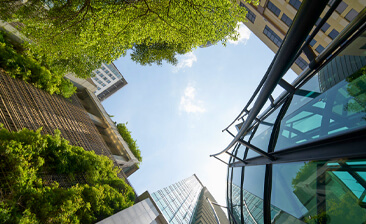
Acea for World Energy Saving Day
The principle behind composting is to reproduce, under controlled situations, the natural biological process of decomposition of the organic matter in waste by microorganisms in the environment. The result, after a variable time depending on the type of process adopted, is precisely compost. This is how waste material from the production and consumption chain becomes a new resource for the first stage of the agricultural supply chain.
The composting process of the organic waste is based on the transformation of a wide range of organic materials into a high-quality mixed and composted soil conditioner.
These wastes come from a variety of sources, including urban organic collection, agro-industrial waste, green mowing, pruning, and even sewage sludge.
Before entering composting facilities, these materials undergo a pre-treatment necessary to remove impurities and foreign materials.
Effective separate collection of wet waste helps produce a higher quality compost, free of foreign materials that could disturb the delicate fermentation process.
The organic waste composting process mainly involves three stages of treatment of the organic fraction coming from separate waste collection.
The process is controlled and stabilised through the use of temperature sensors and advanced digital technologies that ensure the effective action of the bacteria. Therefore, it is an accelerated and managed process that would happen in nature anyway.
During the anaerobic digestion process that precedes waste composting, biogas is produced through processes that occur naturally under controlled temperature and humidity. This biogas can be properly managed and used for the operation of the plants or can contribute to the supply of the national energy grid.
Once the high-quality compost is obtained, it is packaged appropriately and placed on the market where it finds application in agriculture and floriculture.
It should be noted that the technologies used in the plants and the specific processes may vary depending on the characteristics of the plant and the type of organic waste treated.
Discover the latest news and initiatives of the Acea Group

Acea for World Energy Saving Day

Visit the virtual museum about the history of the Acea Group

The channel for the commercial requests on land urbanisation

Acea turns the spotlight on the Rome Film Festival 2023

Acea is in the "Gold class" in the .trust research

Read more about our culture of inclusiveness